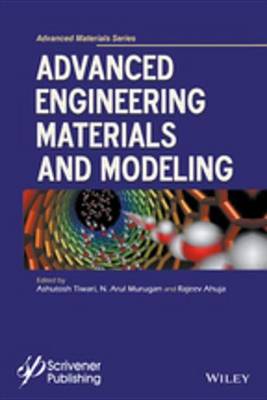Advanced Material
6 total works
Because of their unique properties (size, shape, and surface functions), functional materials are gaining significant attention in the areas of energy conversion and storage, sensing, electronics, photonics, and biomedicine. Within the chapters of this book written by well-known researchers, one will find the range of methods that have been developed for preparation and functionalization of organic, inorganic and hybrid structures which are the necessary building blocks for the architecture of various advanced functional materials. The book discusses these innovative methodologies and research strategies, as well as provides a comprehensive and detailed overview of the cutting-edge research on the processing, properties and technology developments of advanced functional materials and their applications.
Specifically, Advanced Functional Materials:
- Compiles the objectives related to functional materials and provides detailed reviews of fundamentals, novel production methods, and frontiers of functional materials, including metalic oxides, conducting polymers, carbon nanotubes, discotic liquid crystalline dimers, calixarenes, crown ethers, chitosan and graphene.
- Discusses the production and characterization of these materials, while mentioning recent approaches developed as well as their uses and applications for sensitive chemiresistors, optical and electronic materials, solar hydrogen generation, supercapacitors, display and organic light-emitting diodes, functional adsorbents, and antimicrobial and biocompatible layer formation.
This volume in the Advanced Materials Book Series includes twelve chapters divided into two main areas: Part 1: Functional Metal Oxides: Architecture, Design and Applications and Part 2: Multifunctional Hybrid Materials: Fundamentals and Frontiers
Graphene Materials: Fundamentals and Emerging Applications brings together innovative methodologies with research and development strategies to provide a detailed state-of-the-art overview of the processing, properties, and technology developments of graphene materials and their wide-ranging applications. The applications areas covered are biosensing, energy storage, environmental monitoring, and health.
The book discusses the various methods that have been developed for the preparation and functionalization of single-layered graphene nanosheets. These form the essential building blocks for the bottom-up architecture of various graphene materials because they possess unique physico-chemical properties such as large surface areas, good conductivity and mechanical strength, high thermal stability and desirable flexibility. The electronic behavior in graphene, such as dirac fermions obtained due to the interaction with the ions of the lattice, has led to the discovery of novel miracles like Klein tunneling in carbon-based solid state systems and the so-called half-integer quantum Hall effect. The combination of these properties makes graphene a highly desirable material for applications.
In particular, Graphene Materials: Fundamentals and Emerging Applications has chapters covering:
- Graphene and related two-dimensional nanomaterials
- Surface functionalization of graphene
- Functional three-dimensional graphene networks
- Covalent graphene-polymer nanocomposites
- Magnesium matrix composites reinforced with graphene nanoplatelets
- Graphene derivatives for energy storage
- Graphene nanocomposite for high performance supercapacitors
- Graphene nanocomposite-based bulk hetro-junction solar cells
- Graphene bimetallic nanocatalysts foam for energy storage and biosensing
- Graphene nanocomposites-based for electrochemical sensors
- Graphene electrodes for health and environmental monitoring
Advanced Engineering Materials and Modeling
by Ashutosh Tiwari, N. Arul Murugan, and Rajeev Ahuja
The engineering of materials with advanced features is driving the research towards the design of innovative materials with high performances. New materials often deliver the best solution for structural applications, precisely contributing towards the finest combination of mechanical properties and low weight. The mimicking of nature's principles lead to a new class of structural materials including biomimetic composites, natural hierarchical materials and smart materials. Meanwhile, computational modeling approaches are the valuable tools complementary to experimental techniques and provide significant information at the microscopic level and explain the properties of materials and their very existence. The modeling also provides useful insights to possible strategies to design and fabricate materials with novel and improved properties. The book brings together these two fascinating areas and offers a comprehensive view of cutting-edge research on materials interfaces and technologies the engineering materials. The topics covered in this book are divided into 2 parts: Engineering of Materials, Characterizations & Applications and Computational Modeling of Materials. The chapters include the following:
- Mechanical and resistance behavior of structural glass beams
- Nanocrystalline metal carbides - microstructure characterization
- SMA-reinforced laminated glass panel
- Sustainable sugarcane bagasse cellulose for papermaking
- Electrospun scaffolds for cardiac tissue engineering
- Bio-inspired composites
- Density functional theory for studying extended systems
- First principles based approaches for modeling materials
- Computer aided materials design
- Computational materials for stochastic electromagnets
- Computational methods for thermal analysis of heterogeneous materials
- Modelling of resistive bilayer structures
- Modeling tunneling of superluminal photons through Brain Microtubules
- Computer aided surgical workflow modeling
- Displaced multiwavelets and splitting algorithms



